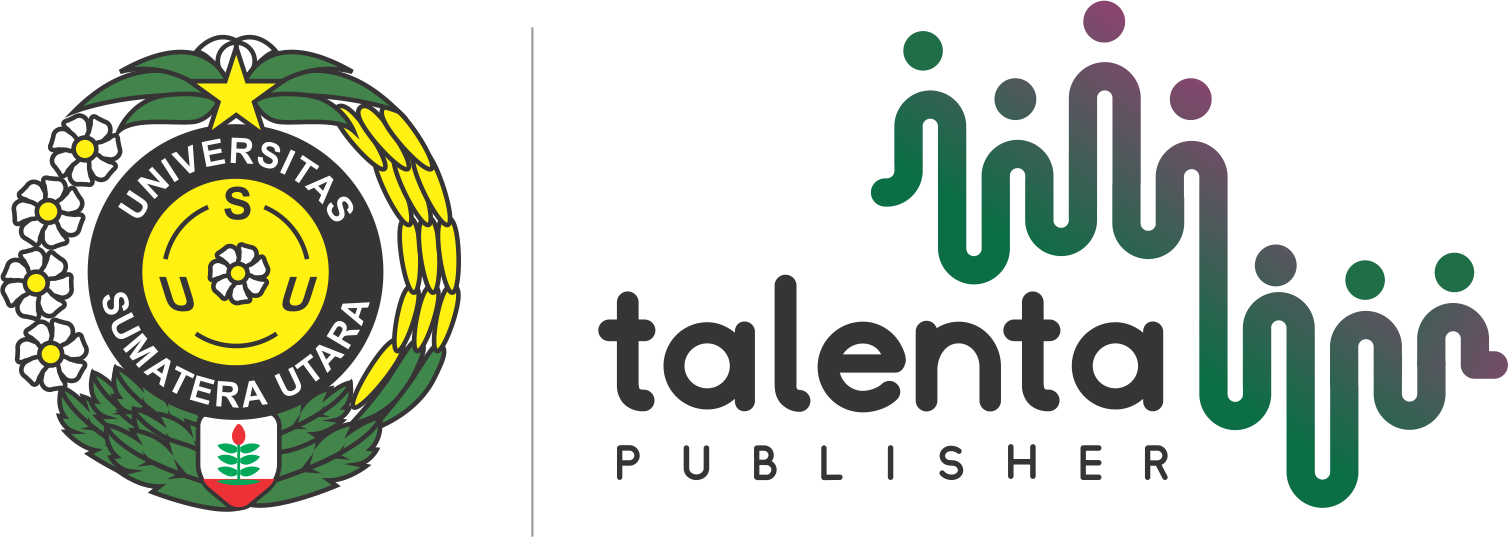Analysis of marketing efficiency and margin of tomatoes in Sabon Gari LGA, Kaduna State, Nigeria
DOI:
https://doi.org/10.32734/injar.v8i1.14755Keywords:
efficiency, marketing, margin, tomatoesAbstract
The study evaluates the marketing margin and efficiency of tomato marketing in Sabon Gari Local Government Area, Kaduna State, Nigeria, where tomatoes are a crucial agricultural product. Despite being the second-largest tomato producer globally, Nigeria's tomato marketing faces challenges such as seasonality and perishability, with insufficient government support for marketing facilities. It’s against this backdrop that the study attempted to determine the marketing margin and efficiency of tomatoes and to identify the tomato marketing constraints in the study area. A multistage sampling method was used to select the respondents. In the first stage, two vegetable markets were purposefully chosen based on the level of patronage they received. The second stage involved a random selection of 20% of the total traders from a list of traders obtained from their association thus making a total of 100 respondents from the two markets. Data were analyzed using basic statistical techniques viz, mean, percentage, and frequency table. Findings revealed that producers received 96.77% and 94.65% of sales in Samaru and Sabo-Gari markets, while wholesalers and retailers received only 1.09% and 3.31%, respectively. The marketing efficiency was notably higher in Sabon-Gari (114.88%) compared to Samaru (35.66%). Major constraints to tomato marketing were perishability, high input costs, and price swings. To enhance efficiency, the study recommends educating Samaru marketers on value addition and improving logistical support, such as timely input delivery, and better storage and transportation facilities.
Downloads
References
World Bank, “Food and Agriculture: Overview,” November 2023, [online]. Available: https://www.worldbank.org/oen/topic/agriculture/overview.
U. Haruna, M. H. Sani, H. A. Danwanka, and E. Adejo, “Economic analysis of fresh tomato marketers in Bauchi Metropolis of Bauchi State, Nigeria,” Nigeria Journal of Agriculture, Food and Environment, vol.8, no.3, pp 1-8, 2012.
J. T. Shing-jy and L. Hsiao-Feng, “Vegetable: Type and Biology,” in Handbook for vegetable preservation and processing Y. H. Hui, Sue Ghazala, Dee M. Graham, K. D. Murrell, and Wai-Kit Eds., New York, NY, USA: CRC Press, pp.1-25, 2003.
A. H. Adenuga, S. B. Fakayode, and R. A. Adewole, “Marketing efficiency and determinants of marketable surplus in vegetable production in Kwara State, Nigeria,” in 4th ICAAAE (Hammamet, Tunusia), (September, 22-25), pp 1-15, 2013.
C. Gebhardt, “The historical role of species from the solanaceae plant family in genetic research,” TAG. Theoretical and applied genetics, Theoretische und angewandte Genetik, vol. 129, no. 12, pp. 2281–2294, 2016. Available: https://doi.org/10.1007/s00122-016-2804-1
H. M. Isa, A. A. Manga, and M. A. Hussaini, “Response of tomato (Solanum lycopersicon L.) to antitranspirants and moisture stress in Kano, Sudan Savannah of Nigeria,” Journal of Dryland Agriculture, vol. 3, no. 1, pp. 48 – 58, 2017.
A. O. Adejobi, R. O. Babatunde, and E. O. Idowu, “Weight and measurement issues in retail market of fresh tomatoes: evidence from Osun State,” Journal of Agricultural Science, vol. 6, no. 4, pp. 20-26, 2011.
Veggieconcept, “Tomato Farming in Nigeria: A Complete Guide” July 2020 [Online]. Available: https://veggieconcept.ng/tomato-farming-in-nigeria/.
B. François-Xavier, “Worldwide (total fresh) tomato production in 2021” , https://www.tomatonews.com/en/worldwide-total-fresh-tomato-production-in-2021_2_1911.html (accessed, Aug. 18, 2023).
FAOSTAT, “FAOSTAT,” 2023. Available: https://www.fao.org/faostat.
National Agricultural Extension and Research Liaison Services (NAERLS), “Agricultural Performance Survey Reports,” 2011. Available: https://naerls.gov.ng/reports/.
O. A. Taiwo, “Economic analysis of tomato marketing in Ondo State, Nigeria,” Journal of Horticultural Science, vol. 6, no. 2, pp. 2581-2586, 2020.
National Population Commission NPC, “2006 Census” Headquarters Block 14 Lulu's Street PMB 281, Abuja Nigeria.
Y. Bila and Y. Bulama, “Marketing efficiency: A case study of maiduguri cattle market, Borno State Nigeria,” Global Journal of Pure and Applied Sciences, vol. 13, no. 1, pp. 7-12, 2007.
Setyowati, E. S. Rahayu, H. Irianto, and J. Sutrisno, “Analysis of marketing efficiency of shallot (Allium ascalonicum L.) in Karanganyar Regency,” IOP Conf. Series: Earth and Environmental Science, vol 905 p012056, 2021.
Y. S. Tosin, “Analysis of Tomato Marketing in Ilorin Metropolis of Kwara State: Case Study of Ilorin Metropolis of Kwara State,” An unpublished project of the Department of Agricultural Economics and Extension Technology, School of Agriculture and Agricultural Technology, Federal University of Technology Minna, Niger state, 2018.
Downloads
Published
How to Cite
Issue
Section
License
Copyright (c) 2025 Indonesian Journal of Agricultural Research

This work is licensed under a Creative Commons Attribution-NonCommercial-ShareAlike 4.0 International License.



















